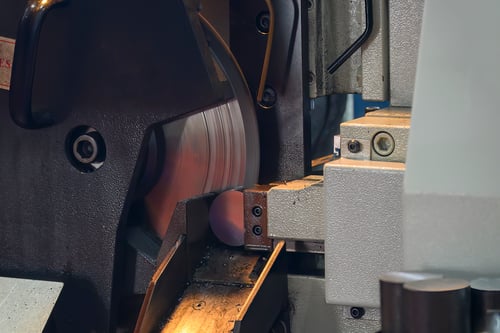Although you can choose from a wide selection of bond structures for your diamond cutoff wheel, it is recommended to begin with a resin bond for most applications.
Tip #1: Start soft! A smooth cut is the best way to avoid deflection during the cutting process. To guarantee this, begin by trying a resin-bonded diamond cutoff wheel. Resin bonds are known as more free-cutting bonds, meaning they have higher abrasive renewal rates and reveal new cutting edges at a higher rate. If necessary, a harder bond like metal can be utilized if the wear rate is too excessive.
At Eagle, our CutMax bonds are utilized on each cutoff wheel we offer. Not only are they specially designed to provide optimal cutting to a wide variety of materials, but Eagle Superabrasives Inc. provides nonstop customer service until your operation is running as smoothly as possible. This means a cutoff wheel purchased at Eagle isn’t just a one-off sale. Eagle’s engineers offer careful adjustments to the wheel chemistry that can result in a wide variety of formulations to ensure the perfect cut. At Eagle, you can start soft with a CutMax bond.
Whether you’re cutting glass optics or carbide rods, a diamond cutoff wheel could be a great choice for your operation.
Tip #2: Ensure your cut rate is optimal for the material being processed. Attempting to cut brittle materials like glass and ceramics too quickly can chip the material, usually during the exit of the cutoff wheel from the cutting area. In the end, slightly slower processing can save manufacturers from a mountain of wasted products.
Whether you’re using a grinding wheel or a cutoff wheel, it is important to ensure the process is well executed.
Tip #3: A well-maintained coolant system. Excessive heat generation can cause a host of problems during a cutting operation, but also prematurely wears the wheel surface. To produce the best cut and extend the life of your wheel, ensure you have a well-maintained coolant system. If you’re cutting dry, don’t panic! Just make sure your cutoff wheel is designed to be used dry.





